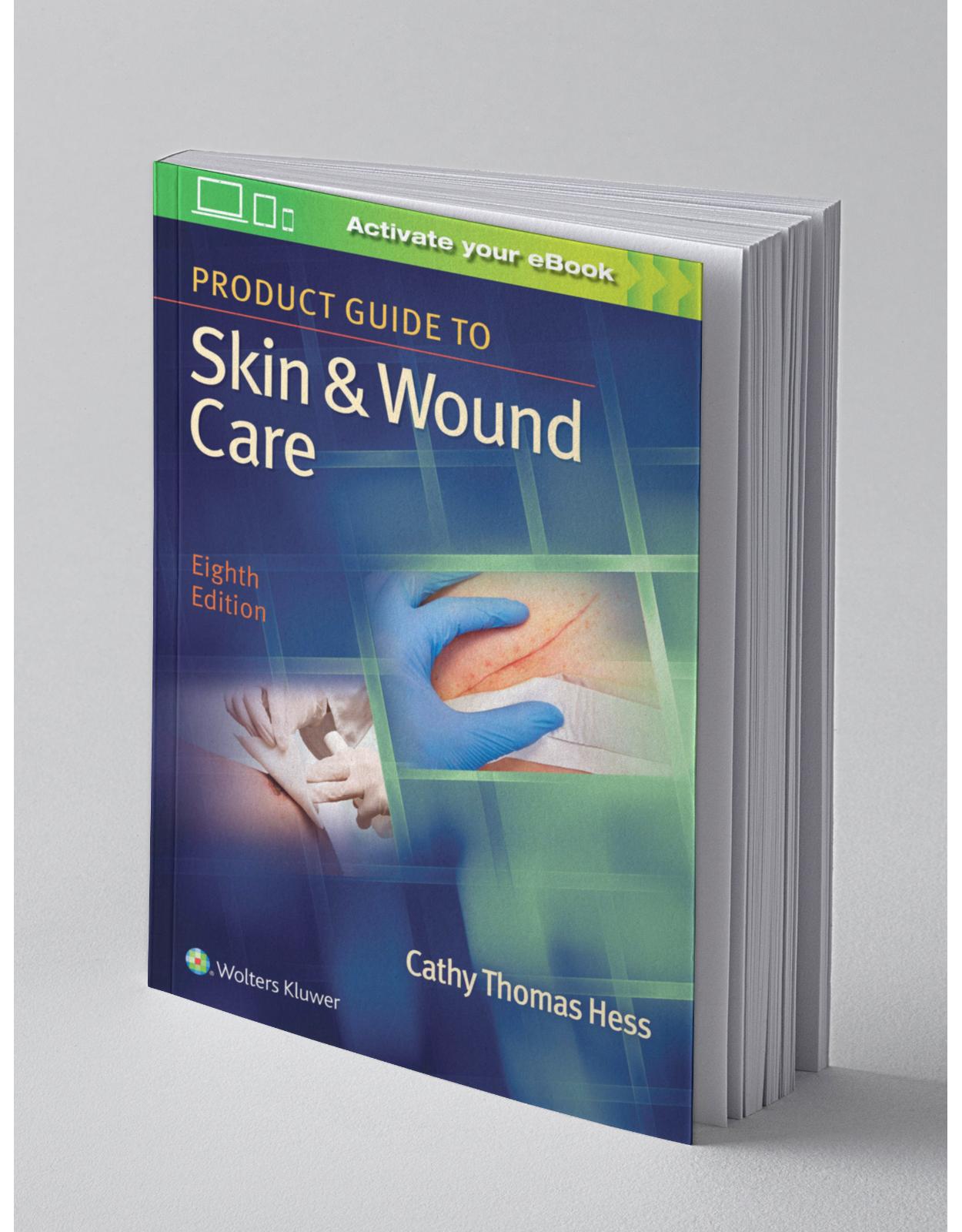
The Business of Dermatology
Livrare gratis la comenzi peste 500 RON. Pentru celelalte comenzi livrarea este 20 RON.
Disponibilitate: La comanda in aproximativ 4 saptamani
Editura: Thieme
Limba: Engleza
Nr. pagini: 355
Coperta: Paperback
Dimensiuni: 173 x 238 x 25 mm
An aparitie: 06 May 2020
Description:
The ultimate guide to managing the multifaceted business aspects of a dermatology practice
Although board-certified dermatologists provide the best care for their patients, managing a practice and optimizing every facet of the business is a daunting endeavor. Business acumen is not taught in residency and is the most overlooked aspect of any given practice. The Business of Dermatology, written by esteemed dermatologists Jeffrey S. Dover, Kavita Mariwalla, and an impressive group of experts, provides a rare opportunity to learn about the operations side of practices across the country. Written in an informal tone, this unique book enables readers to be privy to a "40-way chat" with dermatologists whose practices are flourishing.
With a vast wealth of information relevant to the business side of a dermatology practice, this remarkable resource fills the gap between the training phase and acquisition of professional confidence. Fifty-five chapters offer insightful, highly practical pearls for everyone—from early-career dermatologists and those in solo-practice to employed physicians in large groups. Even the most seasoned practitioners will benefit from firsthand knowledge and real-world tips shared by physicians who have made their own mistakes trying to get practices off the ground and maintain them.
Key Features:
Written by top dermatologists from the perspective of "if we knew then what we know now…"
Organized in a format and style conducive to easy reading, with practical tips to implement immediately
Covers all practice-relevant topics, including office space and equipment, managing financials, diverse practice models, human resources, employment considerations, patient issues, pricing, essential surgical tools/supplies, marketing, and much more
Top ten lists in each chapter highlighting the key take-home points
The Business of Dermatology is an indispensable, one-stop source for all trainee and practicing dermatologists who need insightful guidance on setting up, organizing, managing, or optimizing their practice.
Section I Bricks and Mortar
1 To Rent or to Buy: That Is the Question
1.1 Twelve Years of Education and Yet
1.2 Location, Location, Location
1.3 Buying versus Leasing 101
1.4 Are You Ready for Commitment? The Pros and Cons of Purchasing Office Space
1.5 Constant Vigilance: The Pros and Cons of Leasing Office Space
1.6 City Mouse, Country Mouse
1.7 There’s a Perfect Match for Everyone
1.8 Office Configuration
2 Location
3 How Much Space Do I Need?
3.1 Introduction
3.2 Number of Providers and Workflow
3.3 Service Type
3.4 Spatial Configurations and Design Organizational Patterns
3.5 Clinical and Support Areas Needed
3.6 Program and Area Requirements Calculations
4 Creating a Business Plan
4.1 Introduction
4.2 Creating Your Business Plan
4.3 Obtaining Financing
4.4 Dos and Don’ts
4.5 Conclusion
5 Room Layout
5.1 Introduction
5.2 Where Do I Start?
5.3 Elements of the Room Layout
5.4 Other Important Considerations
5.5 Potential Pitfalls
5.6 Conclusion
6 Office Flow
6.1 Introduction
6.2 Check-in
6.3 Rooming
6.4 Check-out
6.5 Conclusion
7 Creating a Practice Ambience
7.1 Introduction
7.2 Creating a Welcome Area
8 Photography and Space Requirements for Everyday and Clinical Trials
8.1 Introduction
8.2 The Consent Process
8.3 The Office Setup
8.4 Positioning the Patient and Framing the Photograph
8.5 The Camera: Compression, Focus, and Resolution
8.6 Storage and Transmission
8.7 Conclusion
9 Corporate Structure: Limited Liability and Taxation
9.1 What Does Corporate Structure Mean?
9.2 Selecting a Corporate Structure
9.3 Corporations and Medicine: The Prohibition of Corporate Practice of Medicine
9.4 Conclusion
10 Academic versus Private Practice
10.1 Academic
10.2 Private Practice: Solo, Dermatology Group, Medical/Surgical Group
11 Managing the Telecom and IT of Your Business: The Central Nervous System of a Medical Practice
11.1 Introduction
11.2 Hire an IT Consultant
11.3 Reserve a Domain Name and Corporate Email Account
11.4 Establish a Physical Service Address
11.5 Reserve Phone and Fax
11.6 The Buildout
11.7 Establish Service Contracts
11.8 Business Associate Agreement
11.9 Hardware
11.10 Cyber Security
11.11 Conclusion
12 Choosing and Implementing an Electronic Medical Record System
12.1 Introduction
12.2 Step One: Set a Tone
12.3 Step Two: Create a Multidisciplinary Implementation Team
12.4 Step Three: Choose the Software
12.5 Step Four: Configure Your Software
12.6 Step Five: Identify Hardware and Personnel Needs
12.7 Step Six: Transfer Data
12.8 Step Seven: Decide on the Launch Approach
12.9 Step Eight: Develop Disaster Protocols
12.10 Step Nine: Initiate Your Training Plan
12.11 Step Ten: Enhance EMR-related Communication Skills
12.12 Conclusion
13 Private Equity and Venture Capital-Backed Practice Models
Editor’s Note
13.1 Part A: The Corporatization of Dermatology
13.2 Part B: Testimonials from Dermatologists Regarding PE-Backed Practices
13.3 Part C: Selling a Practice: The Viewpoint from Someone Who Sold
Section II Human Resources
14 Essential Components of an Employee Manual
14.1 Introduction
14.2 Step One: Why Are You Doing This?
14.3 Step Two: Who Are You?
14.4 Step Three: Gather Your Policies
14.5 Step Four: Choosing a Template
14.6 Step Five: Creating a Welcome Message
14.7 Step Six: Table of Contents
14.8 Step Seven: Handbook Topic Selection
14.9 Step Eight: You’re Done!
14.10 Step Nine: Updates
15 Vision and Mission Statement
15.1 Introduction
15.2 What Are Vision and Mission Statements?
15.3 Why Do You Need a Vision and/or Mission Statement?
15.4 How Do You Write a Vision Statement?
15.5 Examples of Vision Statements
15.6 How Do You Write a Mission Statement?
15.7 Examples of Mission Statements
15.8 Should a Mission Statement Change with Time?
15.9 Conclusion
16 Employees versus Independent Contractors
16.1 Introduction
16.2 Step One: What Exactly Is an Independent Contractor?
16.3 Step Two: Deciding If Becoming an Independent Contractor Is the Right Step for You
16.4 Step Three: Once You Have Decided on Your Preferred Employment Model, What Are the Next Steps?
16.5 Conclusion
17 Salaried versus Hourly Wage: Which Is Better and for What Positions?
17.1 Introduction
17.2 The Hourly Worker
17.3 The Salaried Worker
17.4 When Hourly Is Better
17.5 When Salaried Is Better
17.6 Incentives, Emotions, and Unintended Consequences
18 The Practice Administrator
18.1 What to Consider When Assessing the Need for a Practice Administrator
18.2 Conclusion
19 A Primer on Employment Law for Dermatology Practices
19.1 Introduction
19.2 The Hiring Process
19.3 The Day-to-Day of Employment
19.4 Termination
19.5 Conclusion
20 Essential Policies
20.1 Introduction
20.2 Essential Staff/Employee Policies
20.3 Dress Code, Grooming, and Appearance
20.4 Safety
20.5 Computers, Electronic Mail, Electronic Record, and Voice Mail Usage Policy
20.6 Gifts
20.7 Visitors
20.8 Arbitration Policy and Agreement
20.9 Safety, Security, and Avoiding Theft
20.10 Account Security
20.11 Policy on Handling Cash
21 Questions to Ask When Bringing on a Physician
21.1 Introduction
21.2 Where Should You Start When Expanding Your Practice?
21.3 Step One: Plan Requirements for Onboarding a Physician
21.4 Step Two: Searching for a Physician
21.5 Step Three: Getting to Know Potential Physicians
21.6 Step Four: Bringing on the Successful Physician
21.7 Interview To-Do List
21.8 Questions to Ask and Questions to Avoid
21.9 Breaking Down the Benefits
21.10 Do You Feel a Connection?
21.11 Conclusion
22 Designing Your Cosmetic Dermatology Practice for Maximum Efficiency: A Case Study
22.1 Your Vision, Your Mission
22.2 Building Your Dream Team
22.3 Office Design
22.4 Who Do You Serve?
22.5 Day-to-Day Strategies
22.6 The Treatment Plan
22.7 Scheduling
22.8 Efficient Marketing
22.9 Efficient Ordering and Inventory
22.10 Improving Systems
Section III Patient Relations
23 “It Depends”: No-show Fees, Cancellation Policies, and Deposits for Procedures
23.1 Introduction
23.2 Why Do Patients No-show for Appointments?
23.3 The Anatomy of a No-Show Fee
23.4 Prepayments and Deposits on Procedures
23.5 Reducing No-Shows
23.6 Conclusion
24 Reminder Calls/Texts: Implementing an Effective Appointment Reminder System
24.1 The Cost of Missed Appointments
24.2 Increasing Attendance with Appointment Reminders
24.3 Not All Reminders Are Created Equal
24.4 Conclusion
25 Is There a Better Way to Answer Calls?
25.1 Introduction
25.2 Minimizing Calls
25.3 Conclusion
26 Critical Components of Consents and Documentation
26.1 The Legal Landscape in Dermatology
26.2 Informed Consent
26.3 Negligence and the Standard of Care
26.4 Habit Evidence and the Importance of Written Documentation
26.5 Patient Factors
27 Patient Portals and Communication in the Age of EMR
27.1 Introduction
27.2 Portals and Communication
27.3 Conclusion
28 Teledermatology Ground Rules
28.1 Introduction
28.2 Rule One: Add Teledermatology to Add Value
28.3 Rule Two: Pick the Right Platform(s) to Use
28.4 Rule Three: You Gotta Get Paid
28.5 Rule Four: Teledermatology Can Work Well
28.6 Rule Five: ..But Not Always
28.7 Conclusion
29 Risk Management
29.1 Introduction
29.2 Techniques for Risk Management
29.3 Measures for Mitigating Consequences of an Adverse Event
29.4 Consent and Arbitration
29.5 Conclusion
Section IV The Daily Grind
30 The Ideal Schedule
30.1 Introduction
30.2 The Schedule Pundits
30.3 Closing Thoughts
31 Delegating: Physician Extenders and Integration into a Practice
31.1 Introduction
31.2 What Is an “Extender”?
31.3 Question One: Wait Time
31.4 Question Two: Your Personality
31.5 Interview Red Flags
31.6 Question Three: New Grad versus Experienced Extender
31.7 Question Four: Supervision
31.8 Question Five: Changing Your Office Flow
31.9 Delegating to Your Extender
31.10 Pay
31.11 Conclusion
32 Managing Expectations of Staff
32.1 Introduction
32.2 Section One Objectives
32.3 Section Two Objectives
32.4 A Note on Managing Burnout
33 Pricing Cosmetic Procedures
33.1 Introduction
33.2 Commodity versus Luxury
33.3 Recognize Your Worth and Make It Known
33.4 Pricing Your Procedures
33.5 How Expensive Should I Be? Price Matching and Discounting
33.6 Conclusion
34 Integrating Cosmeceuticals into Daily Practice
34.1 Introduction
34.2 Our Skin Care Consultant and Project Leader
34.3 Choosing Products and Making Goals
34.4 Educating and Indoctrinating Staff
34.5 Devote Space
34.6 Regimen Cards for Common Diagnoses
34.7 Internet and Social Media
34.8 Aestheticians
34.9 Loyalty Programs and Skin Care
34.10 Our Future Goals
34.11 Specific Financial Considerations and Benchmarks
34.12 Common Pitfalls When Starting a Skin Care Business
34.13 Conclusion
35 Building a Budget/Calculating Overhead
35.1 Introduction
35.2 Methods for Identifying Revenue
35.3 Methods for Calculating Expenses
35.4 Methods for Creating a Budget
36 Evaluating Pharmacies and Patient Coupons
36.1 Introduction
36.2 Specialty Pharmacies
36.3 Coupons and Rebates
36.4 Conclusion
37 Deciding What Services to Provide
37.1 Introduction
37.2 General Service Categories
37.3 Your Brand
37.4 Equipment
37.5 Training and Experience
37.6 Customer Demand
37.7 Insurance Considerations and Profit Margin
37.8 Adding New Services
37.9 Conclusion
38 Evaluating a Laser for Purchase and Calculating a Return on Investment for a Device
38.1 Introduction
38.2 ROI formula
38.3 Repairs
38.4 Conclusion
39 Evaluating Costs of Fillers and Toxins: Brand Loyalty versus Offering Everything
39.1 Introduction
39.2 Tracking Inventory, Pricing, and Promotions
39.3 Patient Participation in Brand Loyalty
39.4 Conclusion
Section V The Nitty-Gritty
40 Essential Instruments
40.1 Introduction
40.2 Disposable versus Nondisposable Surgical Instruments
40.3 Curettes
40.4 Scalpel Handles and Blades
40.5 Needle Holders
40.6 Scissors
40.7 Forceps
40.8 Hemostats
40.9 Skin Hooks
40.10 Sterilization Methods
40.11 Conclusion
41 Essential Stock to Start a Practice
41.1 Introduction
41.2 Step One: Your Budget
41.3 Step Two: Examination Rooms
41.4 Step Three: Tables
41.5 Step Four: Incorporating Your Electronic Medical Record (EMR)
41.6 Step Five: Prepare Your Rooms to Best Handle Your Most Important Services
41.7 Step Six: Determine How Many Instruments and Supplies You Need
41.8 Step Seven: Establish Your Method of Sterilization
41.9 Step Eight: Have an Inviting Waiting Room
41.10 Step Nine: Be Prepared to Send Patients Home with Appropriate Supplies
41.11 Step Ten: Sell and Stock Products If It Fits Your Personal Model for Patient Care
41.12 Building a Cosmetic Component to Your Practice
41.13 Conclusion
42 Essential Stock for Cosmetic Procedures: How to Determine What to Carry, and Control Inventory and Costs
42.1 Introduction
42.2 Benign Lesion Removal
42.3 Injectables
42.4 Chemical Peels
42.5 Microneedling
42.6 Cosmetic Devices
42.7 Skin Care
43 What Devices Does Your Practice Need?
43.1 Introduction
43.2 Market Analysis
43.3 Purchasing Timeline
43.4 Financial Considerations
44 Loyalty and VIP Programs
44.1 Introduction
44.2 Outside Loyalty Programs and How They Relate to You and Your Patients
44.3 VIP Programs
44.4 Ethics and Legality of Loyalty and VIP Programs
44.5 Conclusion
Section VI Your Image
45 The Most Important Components of a Successful Website
45.1 Introduction
45.2 Who Are You?
45.3 Find a Host
45.4 Create the Website
45.5 The Essential Components
45.6 About Us
45.7 Access to the Patient Portal
45.8 Access to Patient Forms
45.9 Access to Privacy and Policies
45.10 Access to Online Patient Appointments
45.11 “Message Us”
45.12 Services Offered
45.13 Mobile Accessibility
45.14 Online Bill Pay
45.15 Bells and Whistles
45.16 An Online Retail Store
45.17 Join a Mailing List
45.18 Start a Blog
45.19 Videos
45.20 Publications
45.21 Clinical Trials
45.22 Conclusion
46 Social Media
46.1 Introduction
46.2 Step One: Who Is This For?
46.3 Step Two: Name It
46.4 Step Three: Which Platform to Choose
46.5 Step Four: How Do I Do It?
46.6 Step Five: Gaining a Following
46.7 Great, but I Am Already Overwhelmed
46.8 Pitfalls
46.9 Conclusion
47 Creating and Nurturing a Brand/Logo
47.1 Introduction
47.2 Step One: Identify the Goals of Your Brand
47.3 Step Two: Identify the Pillars of your Practice
47.4 Step Three: Create a Mission Statement for Your Brand
47.5 Step Four: Create a Slogan
47.6 Step Five: Pick a Name
47.7 Step Six: Pick Your Web Address and Social Media Handles
47.8 Step Seven: Design Elements of Your Branding
47.9 Step Eight: Design a Website
47.10 Step Nine: Protect Your Brand
47.11 Step Ten: Design Your Dream Office
48 Managing Your Online Reputation
48.1 Introduction
48.2 Online Reputation Management Pearls
48.3 Track Mentions of Your Name and Brand
48.4 Claim Your Brand on Key Social Media Platforms
48.5 Proactively Track Your Online Reviews
48.6 Addressing Negative Reviews
48.7 Develop a Robust Plan to Generate Positive Reviews
48.8 Create a Consistent Voice Online
48.9 Beware of Negative Search Engine Optimization (SEO) and Other Online Attacks
48.10 Build Your Influence through Great Content
48.11 Enlist in Social Media Monitoring
48.12 How NOT to Sue or Get Sued
48.13 SEO Tricks
48.14 Review Removal
48.15 Conclusion
49 Tips for the Media
49.1 Introduction
49.2 How to Increase Your Chances of Being on a Show
49.3 Talking Points
49.4 Preparing for the Event
49.5 The Interview
49.6 General Points to Consider during the Interview
49.7 Examples of Dos and Don’ts for Neuromodulators
49.8 Case Study
49.9 Challenges
50 Marketing and Advertising Your Dermatology Practice
50.1 Introduction
50.2 Creating and Establishing a Brand
50.3 Website
50.4 Digital Media
50.5 Search Engine Optimization
50.6 Content
50.7 Social Media
50.8 Newsletter, Blog
50.9 Reviews
50.10 Offers and Discounts
50.11 Online Shop
50.12 Conclusion
Section VII Miscellaneous
51 Growing Your Practice
51.1 Starting Out
51.2 Creating the Foundation for Growth
51.3 Define Your Practice Purpose and Ideals
51.4 Know Your Practice Type and Competitors
51.5 Ways to Grow Your Practice
51.6 Physician Extenders
51.7 Know Your Numbers
51.8 Service, Service, Service
51.9 It’s All about the Results
51.10 Show Patients that You Care
51.11 Appointment Scheduling
51.12 The Consultation
51.13 Marketing and Public Relations
51.14 Online Reviews
51.15 Conclusion
52 Mohs: Outsource or Keep In-House
52.1 Introduction
52.2 Clinical Volume
52.3 Clinical Space
52.4 Staffing
52.5 Certification
52.6 Conclusion
53 The Ground Rules of Teaching in a Private Practice
53.1 Introduction
53.2 Methodology for Establishing a Teaching Program
54 Staying Active Nationally in the Years after Residency
54.1 Introduction
54.2 Why Be Active Nationally?
54.3 Leadership
54.4 Teaching
54.5 Clinical Research
54.6 Consulting and Advisory Boards
54.7 Volunteer Faculty
54.8 Publishing and Media
54.9 Advocacy
54.10 Charity
54.11 Mentoring
54.12 International Involvement
54.13 Keep Growing and Enjoying Practice
55 Getting Involved in Advocacy
55.1 Introduction
55.2 Why Advocate?
55.3 Health Advocacy
55.4 Patient Advocacy
55.5 Legislative Advocacy
55.6 Conclusion
Index
![]()
| An aparitie | 06 May 2020 |
| Autor | Jeffrey S. Dover, Kavita Mariwalla |
| Dimensiuni | 173 x 238 x 25 mm |
| Editura | Thieme |
| Format | Paperback |
| ISBN | 9783132427792 |
| Limba | Engleza |
| Nr pag | 355 |
-
1,00200 lei 84600 lei










